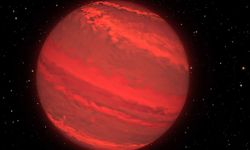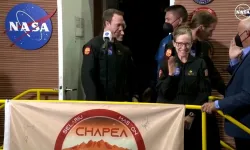When US and French scientists examined the small, irregularly shaped object, they found glucose and other sugars on its red surface.
This discovery may hold clues to the origin of life, as comets may have carried organic molecules from "sugar worlds" like Arrokoth to early Earth.
Arrokoth is part of the Kuiper Belt, which orbits the Sun beyond Neptune.
This object, formed by the collision of two objects, has the shape of a flattened snowball. Scientists are working to explain the unusual colour of its surface.
Visited in 2019, Arrokoth had a large amount of frozen methanol on its surface, and scientists discovered that the surface turned red as a result of the interaction of this methanol with ions.
COULD IT BE THE BEGINNING OF EVOLUTION?
In a new study, a team tried to mimic the colour of Arrokoth by combining methanol ice with energetic electrons.
The experiments revealed that irradiated methanol ice contains sugar-related compounds such as glucose and ribose.
Researchers suggest that these findings could be the source of prebiotic molecules important for the evolution of life on early Earth.
Scientists are trying to understand how such chemicals came to Earth from Kuiper Belt objects such as Arrokoth.
Noting that the majority of short-period comets come from the Kuiper Belt, researchers suggest that such comets may have brought sugars and other organic compounds to early Earth.
















